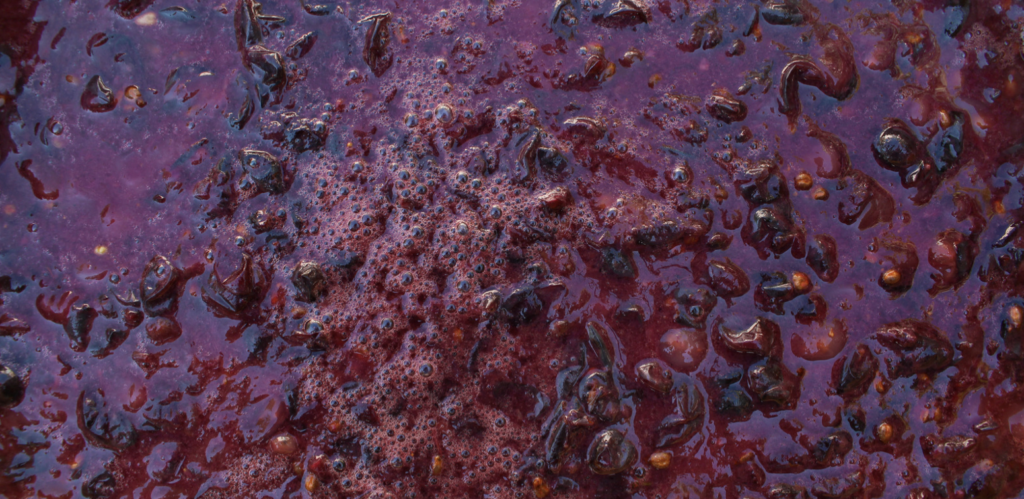What are the Least Bitter Types of Red Wine?
I hear many people say they prefer to drink dry wine. One common reason for this is a growing concern with excess sugars in our diet. Other consumers feel that sweet wines are less “serious” and prefer to be associated with a taste for dry varieties. But the search for the least bitter red wine presents a conundrum.
Whatever the reason, dry wine seekers end up in a paradoxical situation because many also appreciate a fruity taste, which is uncommon in dry wines. So what is a dry wine-lover to do? It all comes down to flavor ratios and personal sensitivities.

What is bitterness?
A good way to describe bitterness is a lack of perception of sugar or fruit flavors in a food/drink. Everyone has different sensitivities to bitterness. Black pepper is a good example of a bitter food—you can try it on its own to learn to detect “bitter” taste!
Some people can tolerate a ton of black pepper in their dishes. Other people can only tolerate a small amount. In general, your tolerance for intense flavor-profiles (like bitterness) will depend on how much of it you are exposed to in your daily diet.
What causes bitterness in red or white wine?
Bitterness in wine is a matter of processes that take place as the wine is fermenting. While uncommon, skillful wineries can offer bitter wine with a high level of fruit flavors. In this situation, the bitterness will go unnoticed. If the wine has a high level of acid, its bitterness will stand out more.
Besides the talent of wine making, bitterness vs fruitiness is also a matter of location. In general, wines from cold climates have less time to generate sugar and fruit flavors. These wines tend to taste more bitter. What causes the shift in flavor dominance, whether by processing or climate? Bitterness in wine is a direct result of something called tannins.
Where do tannins come from?

Tannins in wine come from two sources. The first source is grape skin. Wine color and flavor is also from the skin of grapes. For example, red wines have pigment because they are fermented with their skins. The second contributor to tannin in wine comes from new oak vessels, used during fermentation or for the maturation of the wine.
More on Red Wine…
Tannins in red wines are a direct result of how thick the grape skins are, and their maturation in new or young oak barrels. The skin’s contribution to bitterness is complicated. Though wines in warm climates have more time to generate sugar, they also have time to develop thicker skins. In addition, they generally have lower acidity. Again, it comes down to balance.
What about bitter white wine?
With most white wines, we know their tannins come from the use of oak barrels as a fermentation vessel or from their maturation with new oak. The vast majority of white wines are separated from their skins before fermentation.
White wines from warmer climates have lower acidity which increases your perception of bitterness. At the same time, they have higher sugar levels which translate into more fruit flavors. These fruit flavors then mask your perception of bitterness.

What are some examples of bitter red wine?
Some classic, bitter European red wines are Cabernet Franc from Chinon, Malbec from Cahors, and Pinot Noir from Alto Adige.
I’ve made it clear that the old world vs. new world dynamic is not a fool-proof method for finding out if your wine will taste bitter. At the same time, it’s worth noting that many European (old world) wines are produced in cold climates. Grapes grown in cold climates have higher acidity levels and less time in the sun to produce sugar. This is a recipe for potentially bitter wines.
Which red wines are less bitter?
I look to California, Oregon, Argentina, and Australia when I am looking for a less bitter wine. Warmer climates have lower acid levels and more intense fruit flavors. At the same time, these grapes can have thicker skins. Also, if the vintner moves the wine into a new oak barrel for a year or more, you can expect the wine to pick up tannins from it and bitterness in turn.
And keep your eyes peeled for…
For less bitter red wines look for Australian Shiraz, Mendoza Malbec, California Cabernet Sauvignon, and Oregon Pinot Noir…but do your homework. Check the label or look on the winery’s website. If the wine sees more than a year in new or young oak barrels, you can expect the tannin levels to be elevated and to feel some bitterness in your gums.
What do sommeliers think of bitterness in wine?
Sommeliers (wine stewards) are consciously attracted to bitterness in wine, so you want to be careful when you ask for their personal preferences. Bitterness in the wine means the grape has had to struggle to get from the vineyard and to your table. Even so, if you ask directly what the least bitter red wine is, they may have a more discerned response than the average wine-lover.
What about Burgundy and Rhône wines?
Burgundy is the northern ripening limit for Pinot Noir; the Northern Rhône Valley is the northern ripening limit for Syrah. These regions are traditionally the most sought out regions for their varietal wines. They are also vintage sensitive, so the price does not always match the quality. They can be overpriced for what you get.

How do you select a less bitter wine?
Look at the alcohol level on the label. If the wine is above 14% alcohol then you can expect the wine to at least be fruity. From there, dig around to see if the wine was aged in a barrel. One trick is to look for wines that are from last year’s vintage. If you find a really young wine, then there’s a good chance it was not aged in a barrel. Often, less expensive wines do not see oak treatment.
The Clue Is In the Color
If a wine has a deep pigment then it is likely to have high tannin levels. Color in red wine comes from thick skins and oak barrel treatment.
Swirl the wine in your glass. If the wine leaves behind thick tears on the side of the glass you can expect that the grapes used to make it had thick skins. Look at the specific color. If the color is deep purple its fruitiness will be higher. If the wine is garnet to tawny, you can expect the wine to taste more bitter.
The Best Thing About of Beaujolais
Beaujolais is a wine made from Gamay grape in the region of the same name just south of Burgundy (historically, it was considered a part of Burgundy.) Many of these wines are produced by carbonic maceration.
Carbonic maceration is an intracellular fermentation method. The grapes are fermented without breaking their skins. This produces wines with little skin contact and low tannin levels. When Beaujolais wines are produced properly they have a bubble gum fruitiness and softness that is unique in the world of wine.
And last but not least— let’s talk about Amarone Della Valpolicella
Amarone Della Valpolicella can produce some of the most bitter wines. Amarone is produced in the hills north of Verona in northeastern Italy. These grapes are harvested then laid out on straw mats for three to four months. This production method dries out the grapes, removing the water, and leaves behind concentrated tannins, acids, and sugar. What results is a high alcohol wine with deep pigment, high tannins, and high acid.

Kevin John O’Neill won his WSET level 3 award in 2018. He was a judge in the 2019 New Orleans International Wine Awards. In addition to his experience developing wine brands, he’s also managed millions of dollars in annual wine and spirits revenue.
